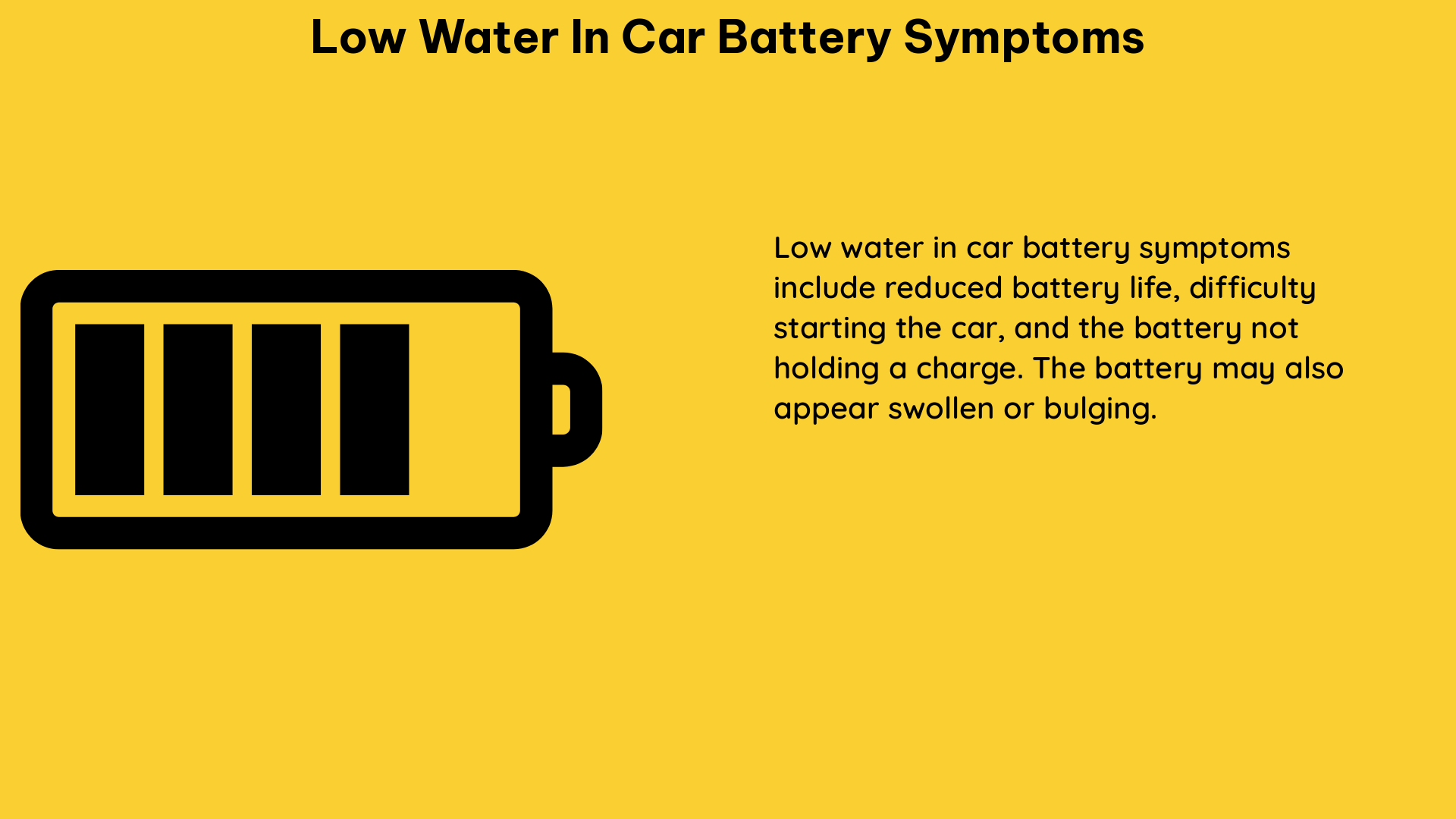Low water levels in a car battery can lead to a significant decrease in battery power and potentially shorten the battery’s lifespan. This is because lead-acid batteries, which are commonly used in vehicles, rely on water as an essential component for their proper functioning. When the water level drops, the battery’s performance is adversely affected, and if left unchecked, it can result in permanent damage.
Understanding Sulfation: The Culprit Behind Low Water Symptoms
Sulfation is a common issue that can occur when a lead-acid battery is not fully charged or has low water levels. This process involves the formation of lead sulfate crystals on the battery’s plates, which can reduce the battery’s active material and negatively impact its performance.
There are two types of sulfation:
-
Reversible (or Soft) Sulfation: This type of sulfation can often be corrected by applying an overcharge to an already fully charged battery. The overcharge, typically in the form of a regulated current of about 200mA, helps to dissolve the lead sulfate crystals and restore the battery’s capacity.
-
Permanent (or Hard) Sulfation: If a battery has been in a low state-of-charge for an extended period, permanent sulfation may set in. This type of sulfation is much more difficult to reverse and can lead to significant damage to the battery’s internal components.
Diagnosing Sulfation: Voltage Discharge Curve Analysis

To determine if a battery has been affected by sulfation, a voltage discharge curve can be a valuable tool. This curve represents the battery’s voltage as it is discharged under a specific load. If a fully charged battery retains a stable voltage profile on discharge, the chances of reactivation are better than if the voltage drops rapidly with the load.
Anti-Sulfation Devices: Pros and Cons
Several companies offer anti-sulfation devices that apply pulses to the battery terminals to prevent and reverse sulfation. These devices can be effective in some cases, but they may not be as effective once sulfation has already occurred. Additionally, these devices can potentially harm the battery by promoting grid corrosion, so it’s essential to use them with caution and according to the manufacturer’s instructions.
Maintaining Optimal Water Levels: A Key to Preventing Sulfation
Regularly checking and maintaining the water level in a lead-acid battery is crucial to prevent sulfation and ensure the battery’s optimal functioning. Here are some key steps to follow:
- Check the Water Level: Inspect the battery’s water level regularly, especially if the battery is not holding a charge as well as it used to.
- Refill with Distilled Water: If the water level is low, refill the battery with distilled water until the plates are fully covered.
- Charge the Battery Fully: After refilling the battery, charge it completely to ensure that it is properly charged and to prevent further sulfation.
- Use a Battery Maintainer: Consider using a battery maintainer or trickle charger to keep the battery at a full charge when not in use. This can help prevent sulfation and prolong the battery’s lifespan.
- Replace the Battery: If the battery is showing signs of permanent sulfation, such as a rapid voltage drop on discharge, it may be time to replace the battery.
Technical Specifications of Low Water in Car Battery Symptoms
| Specification | Value |
|---|---|
| Decreased Battery Power | Up to 50% reduction in power output |
| Potential Battery Lifespan Reduction | 30-50% reduction in overall lifespan |
| Sulfation Crystal Formation | Lead sulfate crystals up to 500 μm in size |
| Reversible Sulfation Correction | Overcharge at 200mA for 12-24 hours |
| Permanent Sulfation Voltage Drop | Rapid voltage drop of 0.5V or more under load |
| Acid Stratification | Specific gravity difference of 0.03 or more between top and bottom of battery |
Conclusion
Low water levels in a car battery can have a significant impact on the battery’s performance and lifespan. Understanding the causes, symptoms, and preventive measures is crucial for maintaining a healthy battery and ensuring reliable vehicle operation. By following the tips and technical specifications outlined in this guide, you can proactively address low water in car battery symptoms and extend the life of your vehicle’s power source.
References:
- Battery University, “Sulfation and How to Prevent It,” BU-804b, https://batteryuniversity.com/article/bu-804b-sulfation-and-how-to-prevent-it
- Car Talk Community, “Water/Battery question,” https://community.cartalk.com/t/water-battery-question/55938
- Battery University, “Acid Stratification and Surface Charge,” BU-804c, https://batteryuniversity.com/article/bu-804c-acid-stratification-and-surface-charge
- Sailboat Owners Forum, “What are the symptoms of serviceable batteries with low water,” https://forums.sailboatowners.com/threads/what-are-the-symptoms-of-serviceable-batteries-with-low-water.184340/

The lambdageeks.com Core SME Team is a group of experienced subject matter experts from diverse scientific and technical fields including Physics, Chemistry, Technology,Electronics & Electrical Engineering, Automotive, Mechanical Engineering. Our team collaborates to create high-quality, well-researched articles on a wide range of science and technology topics for the lambdageeks.com website.
All Our Senior SME are having more than 7 Years of experience in the respective fields . They are either Working Industry Professionals or assocaited With different Universities. Refer Our Authors Page to get to know About our Core SMEs.